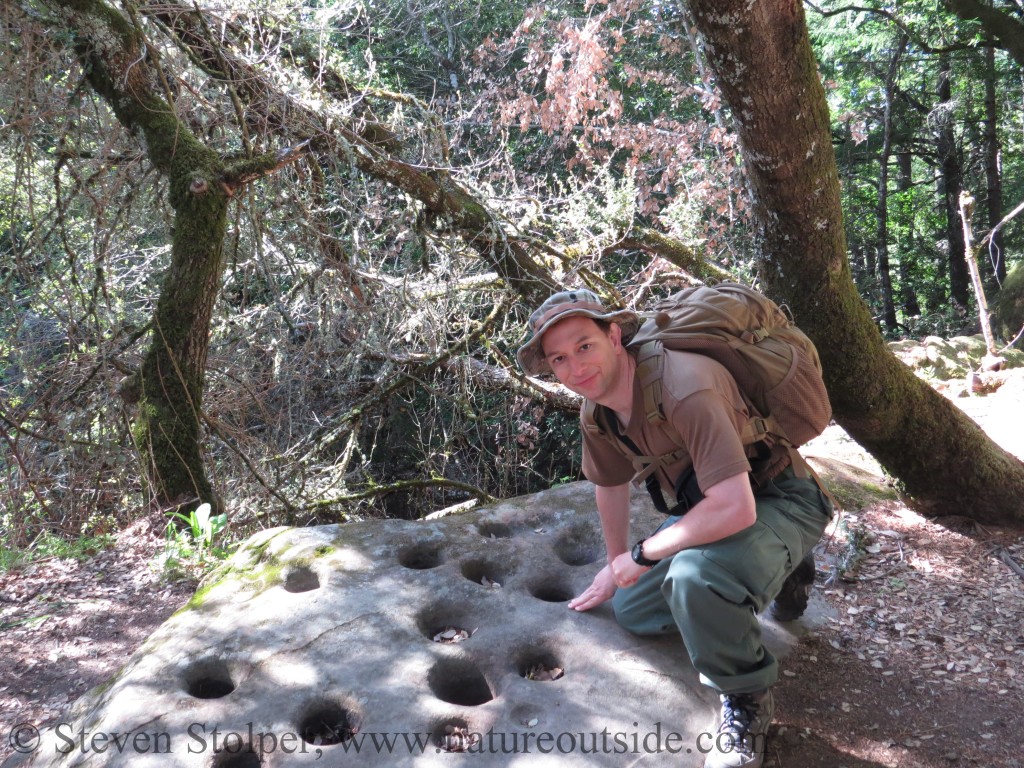
Ohlone bedrock mortar
I want to share a hike I did along the top of the Santa Cruz Mountains in Northern California. I chose a route through what was once dense oak forest. Along the way, I stopped at ancient grinding rocks, called bedrock mortars (BRMs). They are remnants of the indigenous Ohlone Peoples.
I have seen similar ones in other places. For example, there is a BRM created by the Miwok people near Lambert Dome in Tuolumne Meadows, in Yosemite National Park. Thousands of people must walk by it each summer without ever realizing it is an ancient work of Man.
I thought I would share some pictures of a BRM site near me so you can be on the lookout for them. Once you know what you are seeing, they just jump right out at you from the background. You get a sense that “People were here”. If you come upon them unexpectedly in the woods, they are quite powerful. They can inspire feelings of awe and contemplation.
|
A gentle reminder… Please be respectful of these sites. They are considered sacred by those with cultural ties to them. Do not use them, carve, abrade, or write on them. I do not walk on them and I try to treat them as important cultural artifacts.
|
Here are some pictures to give you a feel for the terrain as it exists today. All were taken on my hike. I saw brush rabbit, turkey (imported), hawks, kestrels, etc…
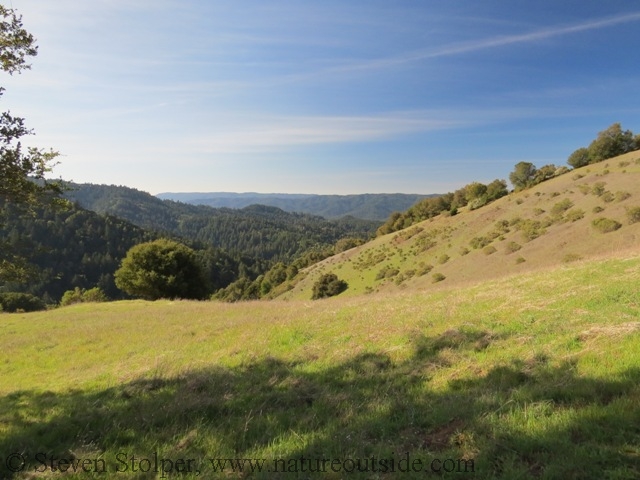
View from the ridge
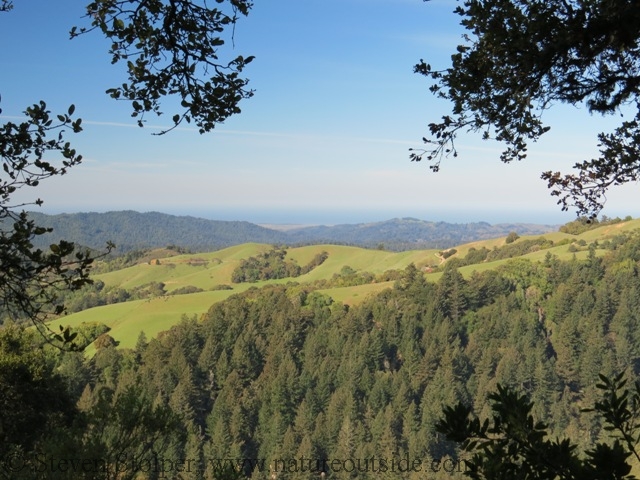
Pacific Ocean visible in background
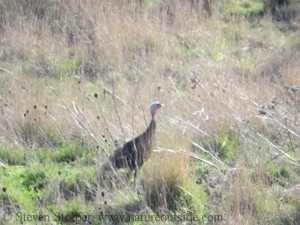
Turkey passing through
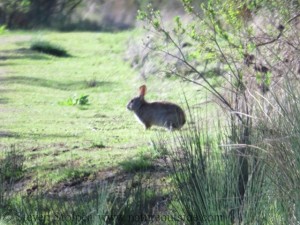
Brush rabbit
Bedrock Mortars
The bedrock mortars near me were used for acorn processing. Acorns contain tannic acid, which makes them bitter and unpalatable. Yet acorns are extremely nutritious. They contain fat and protein as well as carbohydrates. This is rare in a plant food. Amazingly, people around the world discovered that the tannic acid is water soluble. They developed ways to leach it from the acorns. The first step is to crack the acorns. This can be done with rocks. The testa (a red skin high in tannic acid) is stripped from the nut-meat. The next step is where the BRM comes in. The nut-meats are pounded into a fine flour to increase its surface area. This permits the water to leach as much tannin out as possible.
I have been told that there are two types of bedrock mortar near me. The “U” shaped ones are used for acorns. The “V” shaped ones are used to grind seeds like a metate. I have only ever seen “U” shaped ones.
Here is an “in your face” bedrock mortar. It is near what was once a spring-fed stream running through Oak woodland. You often find plants by looking first for the right habitat. I find myself looking for bedrock mortars in the same way. I look for oak trees, a running water source, and a natural rock formation.
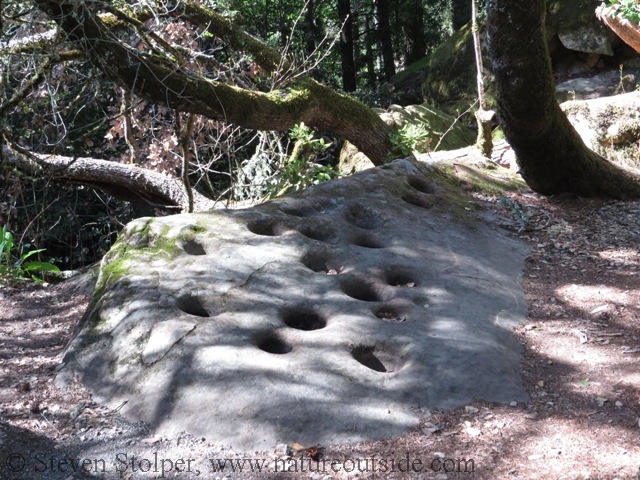
Bedrock mortar
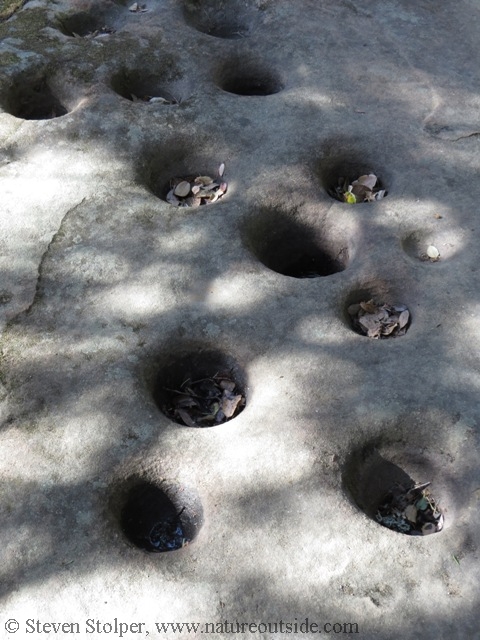
Closer view of mortars
The more a BRM is used, the deeper it gets. I have read that when they reach more than 5 inches deep they are often abandoned. If you look carefully, you can see which holes are younger.
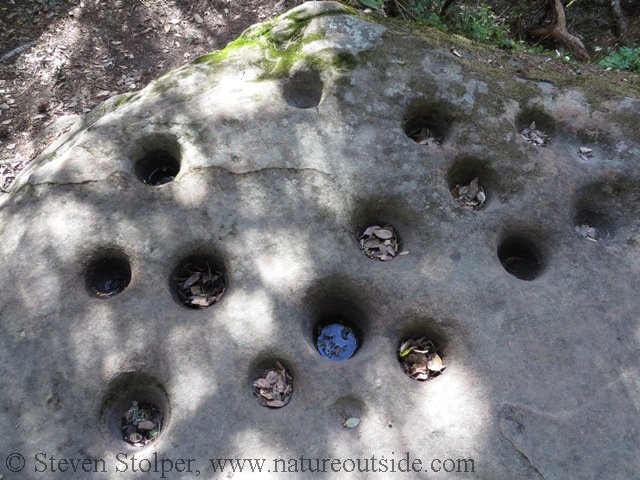
Depth of holes hints at chronology.
Me for scale.

Scale of structure
Here is a close-up of one of the holes.
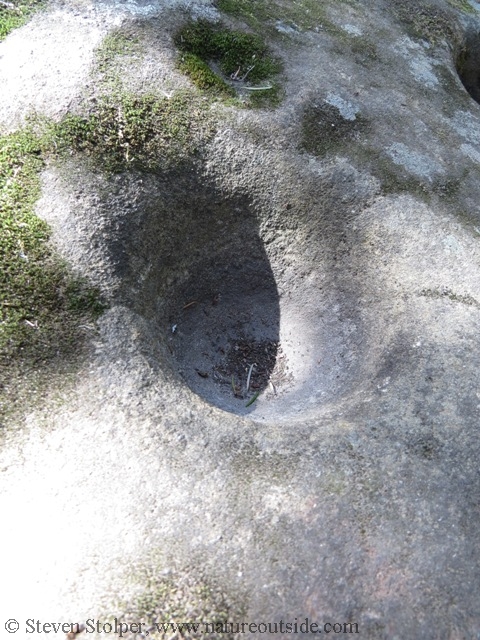
Close view
Additional Information
Can we learn anything from looking at BRMs about the people who used them? I found research that estimates how many people were using a bedrock milling station from the number of holes. It is not clear to me how the researcher distinguishes many people using one site from a few people using a site over a very long period. I think he is using the assumption that each hole is abandoned after it reaches 5″ in combination with some dating technique. Here is the table:
| Milling Features | Social Agent Using Site |
| 1-5 | Single family (nuclear or extended) |
| 6-10 | Single family (extended) or corporate unit (clan) |
| 11-19 | Corporate unit (clan or moiety) |
| 20+ | Corporate unit (moiety) or village |
These numbers may or may not apply to your local area. The information above was taken from a paper written by E. Breck Parkman in the book, The Ohlone Past and Present, edited by Lowell John Bean. I love how all of these researchers seem to have three names! 🙂
Wildflowers
I thought I would end with some California Poppies. Soon the surrounding hills will be covered in bright wildflowers.

California poppies

California poppy
I hope you found this interesting. Please feel free to share any knowledge or experiences you have had with similar sites in your area. I would be interested in hearing about them in the comments below.
More Acorns on NatureOutside
How to Make Acorns into Food (Part 1)
The Tuibun of Coyote Hills (Part 2)
For fun facts and useful tips, join the free Bushcraft Newsletter.



Leave a Comment